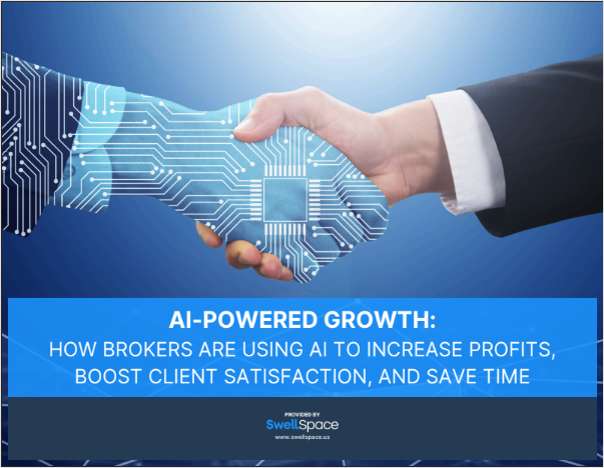How critical is a critical illness voluntary policy when it comes to helping a family financially survive cancer?
While it’s been widely reported that the pace of health care inflation has begun slowing, that trend unfortunately does not extend to the cost of cancer care.
A 2011 study from the Duke University Medical Center showed that cancer patients pay, on average, $1,266 a month out-of-pocket for treatment — costs that must be covered through private insurance, Medicare or a combination of the two.
Staggering as that number is, new data suggest that it will be dwarfed by the future cost of cancer care.
For more than 10 years, pharmaceutical pipelines have been releasing a spate of oral therapies that – when given in conjunction with or as a replacement to traditional chemotherapy -- are proving effective in treating several types of leukemia, bone marrow diseases and skin cancers, among others.
Medical innovation is most appreciated by those facing a life-threatening diagnosis. But it comes with a whole new level of expenses.
Last month, JAMA Oncology published the results of a University of North Carolina study exploring the costs of ground-breaking cancer drugs. When coupled with the evolution of health care consumerism and cost-sharing, the price tag on these treatments practically promise to make new therapies financially unsustainable.
Drugs introduced in 2014 were, on average and after adjusting for medical inflation, six times more expensive than therapies launched in 2000.
A month of treatment with older drugs cost, on average, $1,869 in 2000. For the therapies rolled out in 2014, the average monthly cost was $11,325.
UNC’s research also revealed that the costs of therapies long on the market are experiencing massive inflation. One drug, Imatinib, cost $3,346 per month of treatment when introduced in 2001; in 2014, the price was $8,479 – an annual increase of 7.5 percent.
Some of the sticker shock of orally administered drugs is being passed on to cancer patients. And that has UNC researchers questioning the sustainability of the new cancer therapy market.
“The major trend here is that these products are just getting more expensive over time,” said Stacie Dusetzina, Ph.D., author of the new study, in a statement.
“Patients are increasingly taking on the burden of paying for these high-cost specialty drugs as plans move toward use of higher deductibles and co-insurance, where a patient will pay a percentage of the drug cost rather than a flat co-pay,” added Dusetzina.
Cancer top of mind for employers
Independently of the UNC analysis, the Northeast Business Group on Health (NEBGH), a nonprofit health care consumer advocacy led by employer groups and health care providers, shows cancer treatment costs are top-of-mind for group health plan sponsors.
Cancer treatments rank at the top of employer expenses, despite cancer’s lower prevalence relative to diabetes, hypertension and musculoskeletal disorders, said NEBGH.
But plan sponsors are concerned by more than just premium costs. Beyond containing runaway expenses that push group premiums ever higher, employers are “equally concerned” about ensuring that employees and their families receive top-quality cancer care.
“Employers are invested in the well-being of their employees, and they want to be confident they’re steering people to trusted providers and institutions based on reliable information about outcomes and adherence to quality measures,” said Laurel Pickering, CEO of NEBGH.
NEBGH surveyed and reviewed the health care plans of self-insured employers, covering a total of 1.2 million employees. From there, the group developed a checklist to help sponsors choose a benefits program that offers the best cancer care for employees at a cost both employers and employees can bear.
The checklist has eight categories, ranging from traditional care services and worksite behavioral health services to effective communication strategies.
Critical illness policies can fill the gap
One of the categories was “Access to ancillary services.” And the top recommended offering in that category was critical illness insurance.
Yet when it surveyed plan specifics, NEBGH found that only half of participating sponsors offered voluntary critical illness policies.
A closer look at common plan design suggests that many of the ideal services not currently offered by the average sponsor could be covered by critical illness policies.
For instance, only about 40 percent of plans had a beneficiary out-of-pocket maximum for total medical and pharmacy costs; 42 percent of core medical plans did not cover off-label drugs.
And cancer-specific protocols were not available in the disability benefits offered by 74 percent of employers.
The survey revealed additional coverage gaps that would be filled by a voluntary critical illness plan. Coverage for social services, such as childcare costs, were not offered in 53 percent of plans. Other ancillary costs, like travel and lodging expenses, were left out of nearly half the plans NEBGH examined.
If NEBGH’s premise is accurate — that sponsors genuinely want the most comprehensive cancer care options built into their workplace plans — then it stands to reason that far too many are failing to consider the value proposition of voluntary critical illness coverage.
The costs of the very best drug therapies are clearly on an upward trajectory. While the associated costs stand to financially devastate the average working, core medical plans simply cannot cover a multitude of additional expenses, further compounding the issue.
Those realities put the onus on benefits brokers and the value they can deliver to sponsors and employees through voluntary benefits programs.
In NEBGH’s study, Pickering noted the indispensable role of benefits brokers in addressing the new age of the cancer economy.
“Employee benefits professionals often serve as the gateway to accessing cancer care during a tumultuous time for employees and families,” added Laurel.
Complete your profile to continue reading and get FREE access to BenefitsPRO, part of your ALM digital membership.
Your access to unlimited BenefitsPRO content isn’t changing.
Once you are an ALM digital member, you’ll receive:
- Breaking benefits news and analysis, on-site and via our newsletters and custom alerts
- Educational webcasts, white papers, and ebooks from industry thought leaders
- Critical converage of the property casualty insurance and financial advisory markets on our other ALM sites, PropertyCasualty360 and ThinkAdvisor
Already have an account? Sign In Now
© 2025 ALM Global, LLC, All Rights Reserved. Request academic re-use from www.copyright.com. All other uses, submit a request to [email protected]. For more information visit Asset & Logo Licensing.








